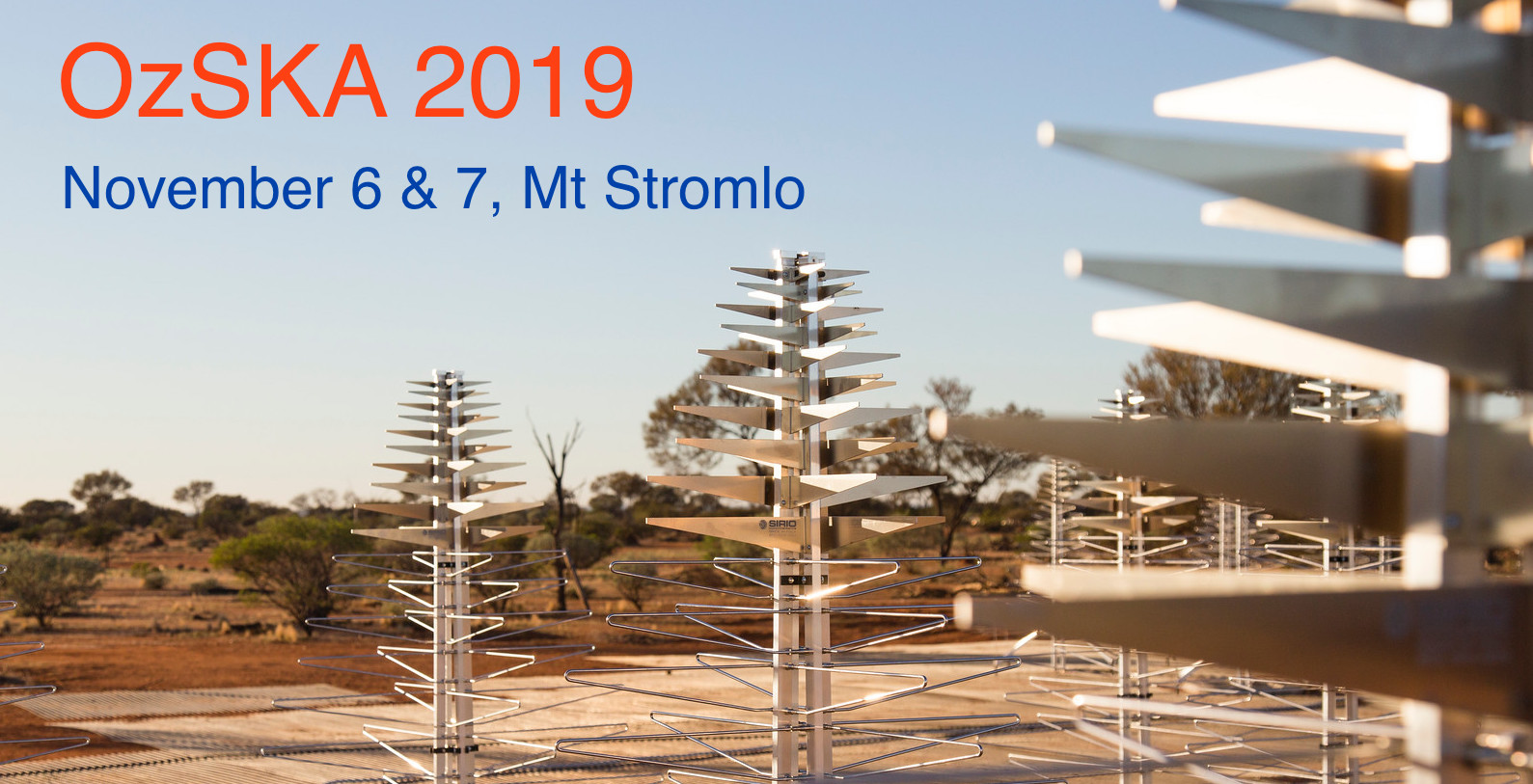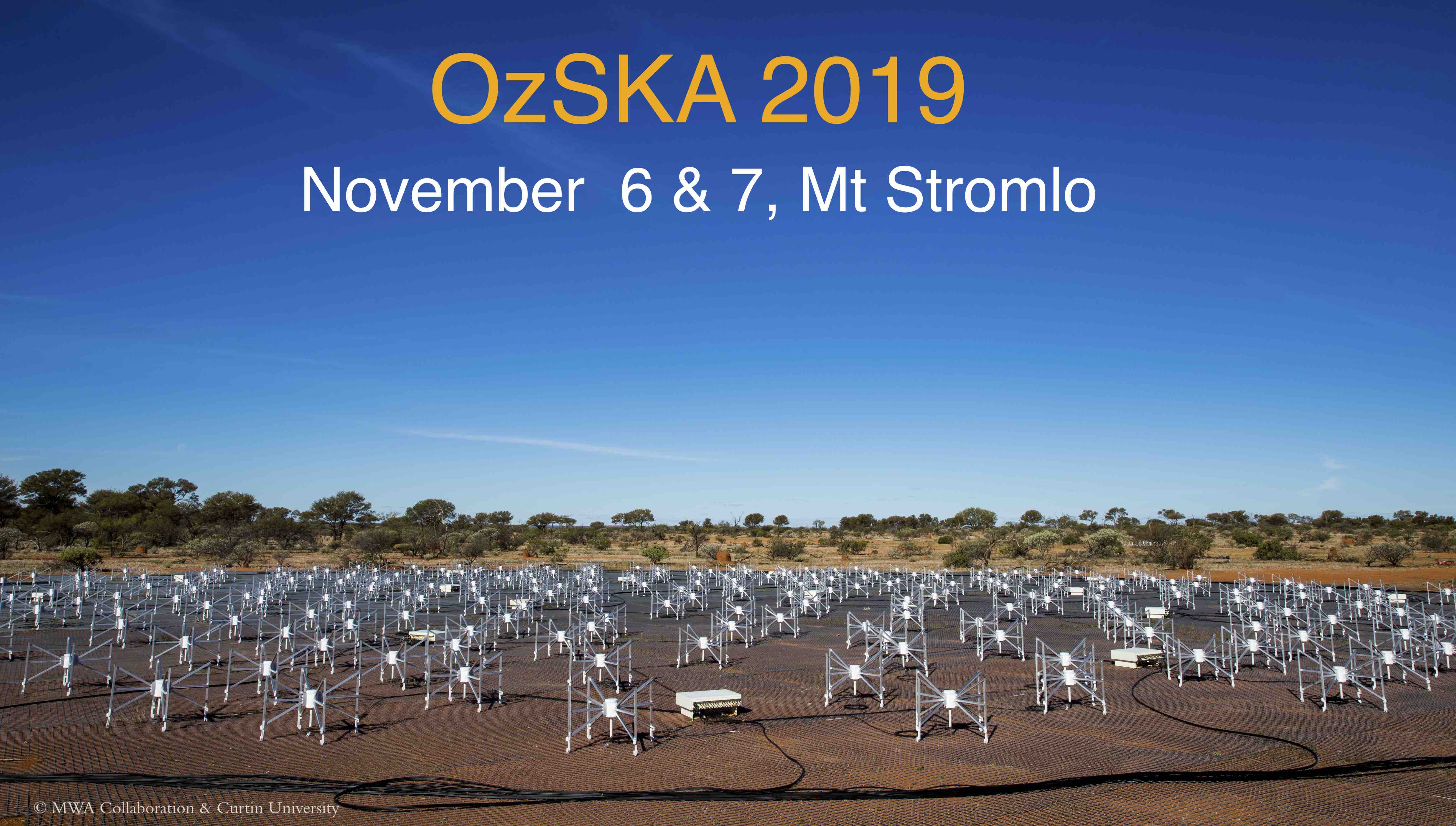OzSKA Workshop 2019

Motivation
Following the success of the previous OzSKA meetings (Melbourne, 2015; Perth, 2016; Sydney, 2017), the OzSKA 2019 Workshop will be held on Wednesday 6th and Thursday 7th November 2019 at Mt Stromlo. The aim of continuing these meetings is to provide updated information to the Australian astronomical community about recent progress within the SKA project including: the development of key science and working group activities, progress towards the realisation of scientific operations on SKA1, and the SKA in the context of multi-wavelength astronomy. The programme will include a number of invited talks, but a significant portion of the program will be devoted to contributed talks and discussion -- contributions from Early Career Researchers are particularly encouraged.
The workshop program (v.2, 30-oct-2019) is now available.
Location, registration, and accommodation
The OzSKA 2019 meeting will be held at Mt Stromlo Observatory near Canberra. Registration is now open. The $50 registration fee covers the cost of catering. Canberra offers a range of accommodation options, including ANU University House.
Information on how to get to Mt Stromlo is available.
Other events
Two other meetings are taking place in Canberra in the same week, which may be of interest to attendees. The Australasian Leadership Computing Symposium runs from November 5th to 8th, with a parallel session focussed on astronomy on Thursday 7th and Friday 8th. And the 2019 AusSRC workshop will be held on Friday November 8th, to discuss the progress towards developing a vision for a global network of SRCs and the future Australian SRC. A specific focus of the AusSRC workshop will be on data and processing in the surveys with the Australian SKA precursors — ASKAP and MWA.
Key dates
- July 2019: First announcement
- September 2019: Registration opens
- 4 October: Abstract deadline. Abstract deadline has passed. Registration still possible, but requests for presentations will be wait-listed.
- 15 October: Program released
- 6/7 November: OzSKA workshop
SOC
The SOC for this meeting is Phil Edwards (CASS), Virginia Kilborn (Swinburne), Tara Murphy (USyd), and Ivy Wong (ICRAR/UWA).
SKA activities
Updates on SKA activities are available from the Australia SKA Project Director's Update and the Notes from the SKA Board Chair. Recent highlights and activities include:
- The signing of the SKA Observatory Convention in March by Australia, South Africa, the United Kingdom, China, Italy, the Netherlands and Portugal. The Convention will need to be ratified by the signatory nations over the next year. Once five countries (including the three host countries) have passed it through their parliaments, the Square Kilometre Array Observatory will officially come into being to govern telescope construction and operations. In the last 18 months Spain, France and Germany’s Max Planck Society have joined the SKA Organisation as Special Members.
- The Critical Design Reviews (CDRs) of the twelve design consortia, with the overall System CDR scheduled for December 2019. This will lead to submission of the Construction Proposal to the first SKA Observatory Council meeting in mid 2020.
- The SKA General Science Meeting and Key Science Workshop, held near Manchester in April 2019, and the East Asia SKA Science workshop, held in Shanghai in May. The 2019 SKA Shanghai Meeting "Concluding our Past, Realising our Future" will take place in late November.
- As the current Deployment Baseline was defined in July 2017 (before completion of any design consortia CDRs) a revision of the Deployment Baseline will commence in September 2019. The Design Baseline represents the planned SKA1, with the Deployment Baseline representing a phased approach to achieve it while adhering to the construction cost cap.
- Establishment of the SKA Regional Centre Steering Committee, which is developing the broad principles (users, functions and operational model) for a network of SRCs. Within Australia, the Australian SKA Regional Centre (AusSRC) is exploring options with regional partners for a SKA Regional Centre.
Developments in these and other areas will be covered in more detail during the meeting, including updates from SKA pathfinders and precursors.

Image credits
The image at the bottom of the page shows the Engineering Development Array, designed and built by Curtin University. It is a single field-node of 256 antennas, replicating the proposed antenna layout of the SKA-LOW field nodes, but using MWA dipole antennas instead of SKALA antennas. Data taken from the EDA is compared and correlated against the MWA (Image credit: MWA Collaboration and Curtin University). The image at the top of the page shows a close-up of SKALA antennas deployed on site.
Page last updated: 19-oct-2019 pge
